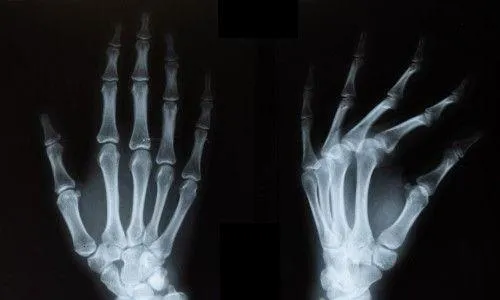Our Blog

When Massage Quits You: The Tangible
Being a massage therapist is a rough gig. We talk good game about body mechanics and lowering your table. We can expound on the best ways to hold an arm or a leg, and how to capitalize on the physics of your hips to comfortably stretch that person’s extremities. We can also casually avoid talking about how “deep tissue” requests can destroy a massage therapists’ life expectancy and how 15 minutes between appointments during an eight-client day isn’t a recipe for success (or hygiene in this, our time of COVID).
Among the things that could be under our control, there is a quietly looming monster that patiently waits: disability.
I’ve heard that disability is the only minority group with open enrollment: you are either disabled or you will be if you live long enough.
My disability mostly takes the form of hypermobility. Since massage school I’ve known that my thumbs are a liability – they stretch too far to be used without being supported. Since elementary school I’ve known that my elbows are weird and do twisty things that can totally gross people out.* It wasn’t until a few years ago I realized the pile of weird joint things had gotten alarmingly high. My right SI joint, ribs and radial bones dislocate; my jaw opens very wide, my knees bend back too far, my ankles roll without pain, and lately all my finger joints hyperextend.
We can talk all day about diagnoses – the most likely culprit is Ehlers-Danlos syndrome, but it is a diagnosis of exclusion and I don’t have any of the life-threatening vascular symptoms (easy bruising, thin/stretchy skin). In the end, the big issue is that something about my collagen makes it less functional so my ligaments don’t do their very simple job of keeping my bones in place.
Oddly, the first sign that this was going to be a problem wasn’t being bendy. It was fatigue. At some point, doing six massages a shift started leaving me so tired that driving home felt dangerous. It was as though every molecule of ATP in my body had been used up, and there was nothing left to help me walk to my car or hold up my head. I backed off to five massages, and then four. Length of massages became an issue as well – anything longer than 60 minutes and I’m toast. It’s to the point now that exceeding six massages a week will require recovery days and probably cause that SI dislocation. When your ligaments don’t do their jobs, the only thing left is muscle – and muscle requires energy to function.
Unless you charge an exorbitant amount, six massages a week is not enough to live off of.
How many massage therapists push through this kind of issue? How many push through straight-up injuries? When you depend on your body and hands for your income, the most minor cuts or accidents can make the job tenuous. Worse, what do you do if you reach the wall and simply can’t massage anymore? For many people, massage is their community and a large part of their identity. Clients are social as well as business connections. Massage therapists work with people through pregnancies and life changes and loss. Can you quit the hands-on part of the work and still be a part of this movement? Will the community even let you stay?
*The Beighton Score is used to screen for hypermobility. One of the questions is “as a child did you amuse your friends by contorting your body into strange shapes OR could you do the splits?”
You can continue this conversation with us in the Healwell community. You can also hear more about this topic on the Interdisciplinary podcast.
Connect With Us:

Contact Us:
4201 Wilson Blvd. #110-341
Arlington, VA 22203
